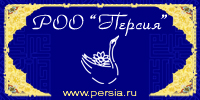Oriental Collection № 3/2013
 |
Bali, a photo essay under the subdivision «Impression» by Svetlana Ryzhakova, opens the third issue of 2013. Continuation of the subject is in the same author’s article «Balinese Mixtures». Svetlana Ryzhakova believe that most things and actions on the island are of strange and quaint view, they follow some natural and cultural footsteps satisfying simultaneously requirements and needs of different worlds, different beings, different logics of the being.
- Amir Khisamutdinov. Hawaiian Special Storage. The article is dedicated to the Hamilton Library, University of Hawaii. Here is the largest collection of Russian emigrant literature. «This is my special storage», — tells the collection’s curator Patricia Polansky meaning earlier unavailable to a simple mortal departments of Soviet libraries. «I collected these books all around the world for many years».
- Nikolay Tsyrempilov. Admonishments of Buddha Shakyamuni. For the second year a group of specialists from Russia and Switzerland works on the joint project of studying the Mongolian «Kanjur», the special version of Buddhistic canon. The article’s author taking part in this project tells on how the studying of this monument’s rarest copy goes.
- Oleg Arin. Wish of Purity and Light. The author presents Valentina Battler, the artist and the poet. Many of her paintings are subscribed with the name of Wang Liushi (artistic nickname for Chinese pictures) that means «The queen of weeping willow and verses». In the article «Touching the Mystery» published by our magazine Valentina Battler writes: «The classical Chinese painting is based on strict canons and it requires moral demands not only from the artist but from the spectator too, embodying the superior aim of art — to teach people the goodness».
- Tatyana Solovyova. Ancient Gentlemen of Fortune. The history knows many people of doubtful, sometimes even scandal, reputation who left their notable trait in the events of their time. Such are the ancient world’s anarchists and robbers — Habiru. The article deals how the Habiru converted themselves from rogues into Syrian citizens and how they lost themselves in the depths of centuries.
- Zaur Margiev. Wine Vapour of Old Batumi. The theme of this historical essay is being understood right after its subtitles: «Dinner», «Cafés and Dukhans», «Wine Passions» etc. On the base of unique representational and literary material the author reproduces the pictures of Western Georgia’s life of early XX century.
- Irina Vinokurova. Silence of the Druze People. The author let the reader know about the Druze people living in Israel. Their religion, their way of life, their traditions are practically unchanged since XI century when they became a mystical sect with an esoteric ideology. The degree of their closeness is so high that we now maybe know of the inner structure of this community’s life as few as centuries ago.
- Viktor Krivonogov. The Veddas, the Burgers, the Moors... Of the whole kaleidoscope composing the Sri Lankan population the article’s author was better introduced to the Veddas, the island’s natives’ descendants, and the Burgers, the group originated from the weddings and contacts of Dutchmen and local women.
- Aleksandr Khokhlov. «I Recorded Very Much in Chuguchak...». The article’s title is the words from the letter of the orientalist Nikolay Katanov (1862 — 1922) sent to Saint Petersburg during his expedition in North-West China. The expedition where he gathered different materials on the life of Muslin peoples played a great role in Katanov’s becoming a scientist. The magazine publishes the treatise «The Rules of Muslim Bon Ton» composed by the scientist on the base of his researches.
- Andrey Strelkov. The Prophecy on Shambala Combat and the Military Campaign of Baron Ungern. Once the article’s author held in his hands a typed Russian text that was a translation from Tibetan of the composition «Praying for Birth in Northern Shambala» by the famous Tibetan religious figure and scientist Lobsang Baldang Yeshe (1738—1780). There was noted that the anonymous translation was done at March, 24 of 1921 in the city of Urga (now Ulan Bator). As a result of his researches the author come to a version that for this action is concert Baron Ungern, one of the most important figures of the White Movement who then stayed in Urga. He wanted to present his military campaign against the Red Army as a sacred and purifying Shambala combat.
- Sergey Smirnov. Shanghai-37 in the Eyes of Russian Emigrants. Russian emigrants living in Shanghai happened to be involved in the military acts of Japan-China war. Russian detachment was one of the best divisions of the Shanghai volunteer corps that defended the city’s International Settlement. Using memoirs and photos the author reproduces episodes of the «battle for Shanghai». A story of the participant of those events Alfred Kheydok «The Captain of Chinese Army» continues the theme.
- Igor Kulagin. Blaze of Eternity. Text author’s notes and sketches of the artist Yulia Ursul made during their joint travel to Iran do not pretend to any general conclusions and deep inferences but let imagine the pictures of life and the traits of the people’s character.
- Yury Zinin. Foggars and Xours. Two Seas Island Pearl. «Samaouar», «Istakan», Baghdad-style Rosary. In the second issue of the new column «Arabesque» the author tells about his meetings during his travels in North Africa and Middle East.
Our «Orientnet» section presents web resources on «Oriental Monarchies» theme.






